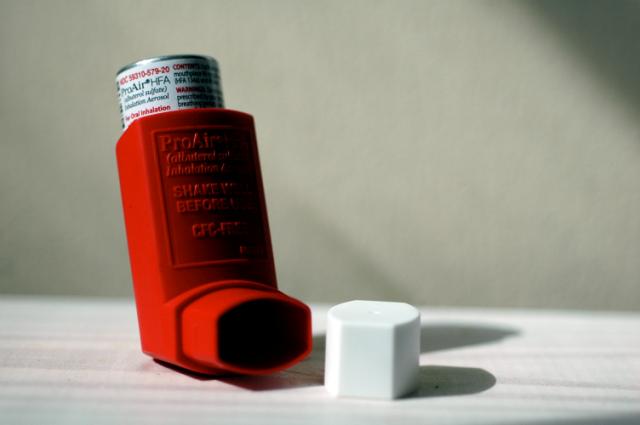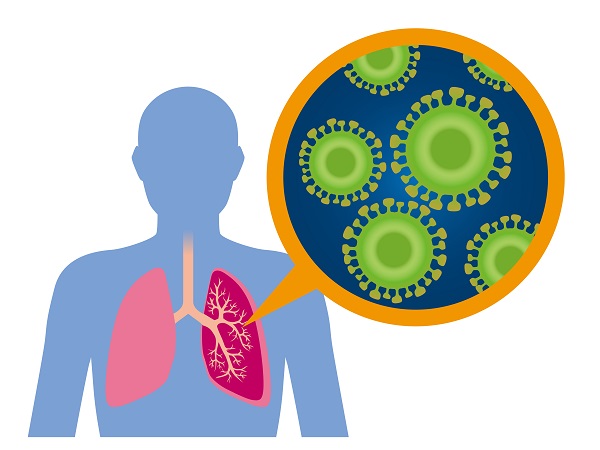Airway smooth muscle buildup is one of the hallmarks of asthma, yet there are no drugs on the market that target this.
However, a new oral drug is making its way down the clinical pipeline: new research shows that fevipiprant might actually prevent asthma attacks by limiting the buildup of airway smooth muscle cell mass.
“Our latest research gives us a better understanding of the mechanisms behind the efficacy of the drug and how changes in one part of the airway wall can impact on others,” said Professor of Respiratory Medicine at the University of Leicester, Chris Brightling.
In severe asthma, airway smooth muscle can build, causing the airway to narrow and making it hard for the patient to breathe. Approximately 20.4 million people are living with asthma in the US, according to the Centers for Disease Control and Prevention.
When airway smooth muscle accumulates, the number of prostaglandin D2 receptors also accumulates. These receptors are involved in allergy and anaphylaxis, and are also expressed by inflammatory immune cells that contribute to airway remodelling in asthma.
Fevipiprant is a D2 antagonist developed by Novartis and is being investigated for its potential in asthma treatment. Using bronchial biopsies taken from a previously completed clinical trial, the researchers studied the effects of fevipiprant on airway smooth muscle mass.
The research was published in Science Translational Medicine and conducted by teams from the University of Leicester and University of British Columbia.
“Our research shows for the first time that Fevipiprant not only reduces inflammation in the airways, but also reduces the amount of muscle in the lining of the airway,” added Brightling. “This is likely to explain some of the effects seen in the symptoms and breathing tests following treatment.”
Because the group did not work with live patients, they developed an advanced computer model of airway remodelling after antagonist treatment. Using the computer model, they were able to reproduce the effects of fevipiprant by changing the activity of inflammatory cells. In other words, the researchers were able to figure out the drug’s mechanism of action.
They found that two types of inflammatory cells were critical in airway smooth muscle buildup, and reducing the number of these cells helped to reduce smooth muscle mass.
“Our findings suggest that fevipiprant could have positive long-term effects upon the progression of the disease through remodelling, as well as improve symptoms and reduce attacks,” said Brightling.
There are other ways to reduce airway smooth muscle mass, but not without caveats. Bronchial thermoplasty heats the airway tissue to reduce the amount of smooth muscle buildup but is usually offered to patients with severe asthma. The calcium channel blocker, gallopamil, might affect airway smooth muscle activation but did not significantly reduce muscle mass in a clinical trial setting.
Given the small sample size, the researchers will need to conduct future studies to corroborate their findings. However, the unique study set-up gave the researchers valuable information they wouldn’t normally be able to access.
“One novel aspect of our study was the way we combined information from a clinical trial, laboratory experiments and computer-based models to give insights that would not have been possible with any of these approaches alone,” said Dr. Ruth Saunders, a research fellow at the University of Leicester who led the experimental laboratory-based work in the study.
Computer modeling can help predict patient outcomes, thereby allowing physicians to develop personalized treatment plans.
A majority of asthma drugs on the market help reduce inflammation or swelling. For more severe cases, patients might take inhaled or injected corticosteroids. But chronic steroid use will be less effective over time, and can lead to undesirable side effects such as weight gain, hypertension and osteoporosis. Introducing fevipiprant to the asthma market will offer a new way to tackle airway smooth muscle buildup, one of the strongest predictors of airflow limitation.
Novartis’ phase III clinical trial evaluating the safety and efficacy of fevipiprant in patients with uncontrolled severe asthma is expected to complete by the end of 2019.












Join or login to leave a comment
JOIN LOGIN